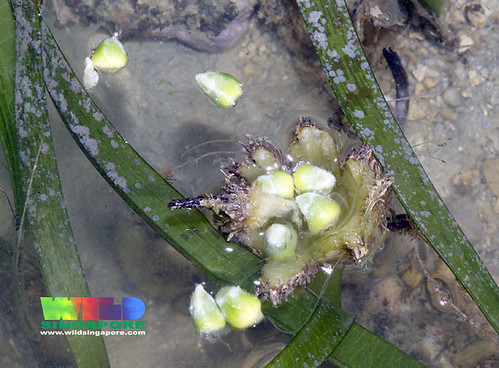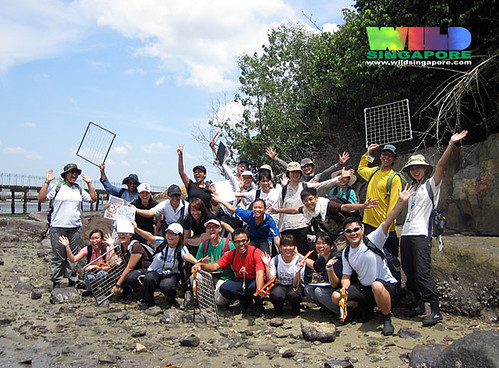 |
| TeamSeagrass in 2008 when seagrasses were still lush. |
What is seagrass sex? And how YOU can make a difference for our seagrasses.
From Growing problem for Singapore's seagrass by Jose Hong, Straits Times AsiaOne 29 Dec 16,
"Around three to four years ago, Dr Siti Maryam Yaakub, started noticing that most of the flowers and fruits had simply stopped appearing.
Seagrass populations can grow by cloning themselves, and long-term surveys have indeed seen certain meadows increasing in size, such as those at Chek Jawa on Pulau Ubin.
But Dr Siti said this clonal growth - if it is indeed what Singapore's seagrass are doing could mean all the new seagrass are equally vulnerable to stressors like disease, making it more likely for entire new populations to die at the same time.
Furthermore, without seeds lying around in the environment, it would be much harder for new plants to return.
Ms Samantha Lai, a PhD candidate at the Experimental Marine Ecology Lab at the National University of Singapore (NUS), said there was already one such case on the shores of Pulau Semakau.
In 2009, a seagrass meadow off the island suddenly died, and aside from a few scattered patches of seagrass, the area remains barren, she said.
Ms Lai said environmental factors were also to blame, but added that one of the consequences of not having enough sexual reproduction "is not having enough seedlings or seeds to help the recovery of Semakau".
What is seagrass sex?
Tape seagrasses have very long leaf blades that can reach 1.5m. Like all seagrasses, they produce flowers! Female Tape seagrass flowers are large with three long petals. Male Tape seagrass flowers are tiny white blobs that float in the water (they resemble styrofoam beads).
The floating male flowers meet female flowers and pollination happens! Eventually, a fruit forms and when it's ripe, it opens and seeds float away to settle down and grow into new Tape seagrass plants.
Why are seagrasses important?
Meadows of seagrass leaves create a miniature underwater forest. Small plants and animals thrive in these thickets. Seagrasses provide shelter for many animals that are not adapted for fast swimming (e.g., the seahorse and filefish). These include juveniles of larger fishes and animals that later move out into deeper waters and include commercially important fishes and sea creatures. Seagrass leaves also provide a place for animals to lay their eggs, and for small animals to settle down.
 |
| The Alligator pipefish is found among seagrasses. |
Disappearing seagrasses in Singapore
More details about observations of disappearing seagrasses in Singapore since 2010 on the wild shores of singapore blog.
You CAN make a difference!
Join the volunteers of TeamSeagrass who have been monitoring Singapore's seagrasses since 2007!
Our work helps gather data to better understand and protect our meadows and the animals that depend on them.





No comments:
Post a Comment